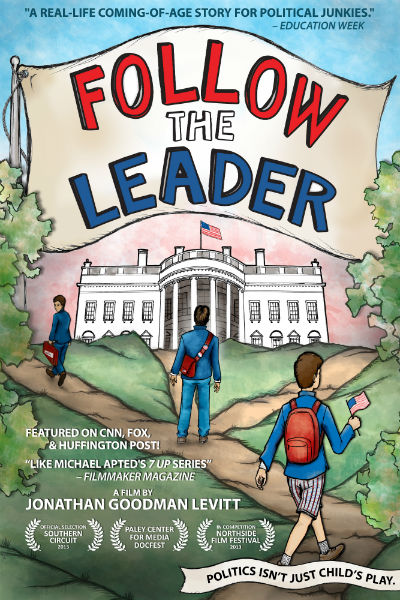Given the number of times the American flag appears in Jonathan Goodman Levitt’s most recent documentary, Follow the Leader, the imagery sparks a reflection on what patriotism actually means. In almost every other scene, red, white, and blue decorate the background, whether the camera’s showing us a camp ceremony, the wall of a college dorm, or the lapels of politicians’ suits. As Levitt himself said, “That might make us think twice about [the flags], or make us question them.”
The documentary follows three high school boys, Nick, D.J., and Ben, all motivated, articulate, and passionate about politics, and all bearing the same dream—to become president of United States. The main characters not only share this same goal, but also the same political passion for the Republican Party, at least at the beginning of the film.
In his first interview, Nick points out that “one of the things I was certain about was what I believed in, but that turned out to be one of the things that changed the most.” The 72-minute documentary traces the characters’ late high school years and early college careers, through which the audience witnesses their transformation from political zealots, certain of their goals and support for conservatives, to thoughtful citizens with broader political views.
“As the characters took different paths politically, the film became less about political positions and more about the universal process of becoming politically conscious and mature,” Levitt told the Voice. In this sense, they can be equally passionate and patriotic without necessarily being conservatives. Follow the Leader proves easy to follow, and it’s certainly aware of its pedagogical value. The resolute attitudes the boys begin with gradually fade towards the end. As a coming-of-age story, the film aptly conveys a basic lesson: Understanding the roots and background of one’s claim before judging or coming to a conclusion proves vital.
As much as it is a film that teaches values, Follow the Leader is also a reflection of the American political scene. The camera flips through shots of American troops armed on Iraqi soil, rockets taking off, clips from a Star Wars trailer, and President Reagan walking out of the White House. These scenes give a glance of times before the 9/11 tragedy, the event that greatly shaped the boys’ generation’s political views.
But Follow the Leader goes even further to capture a more sensitive subject in today’s political reality. In one brief shot, Nick discusses female leadership with his friend Kathryn. He hesitates, but says honestly that he “prefers an authoritative and strong man” in a wartime situation. He poses the question, “Can they [women] be decisive when they’re always filled with emotions?”
Such a scene reflects continuing injustice in national politics. “People have also just had a very hard time grasping why the film is about three white boys, because they imagine it’s somehow not reality,” Levitt said. “They have a hard time dealing with the fact that it’s primarily white men who still run the country politically, given our political system’s slow pace of change.”






